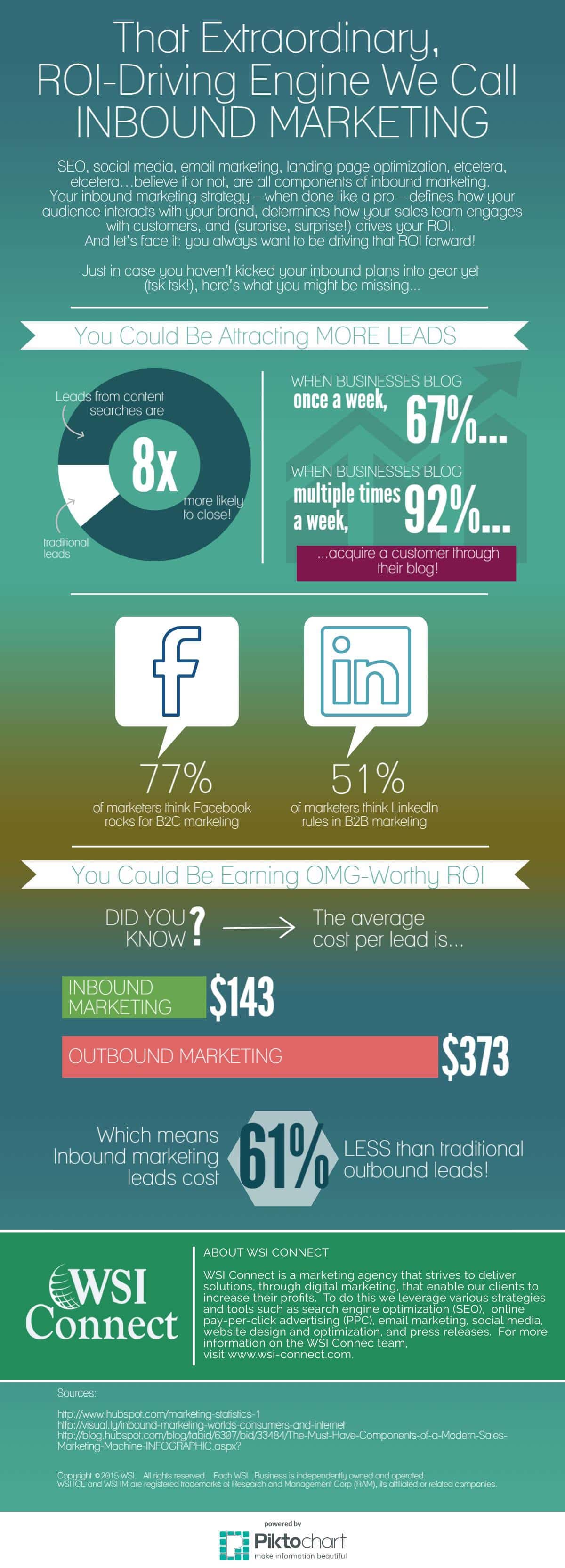Traditional marketing is all about chasing down customers, whether it’s through door-to-door sales, direct mail, or phone calls. But wouldn’t it feel better to be the one being pursued?
Think about how much time and money you could be saving if your customers were seeking you out, rather than the other way around. The trick? Investing in inbound marketing strategies, and then enjoying the greater ROI. This infographic explains how.
What does inbound marketing consist of?
Inbound marketing strategies include things like Search Engine Optimization, blog posts, social media presence, email marketing, and having a great landing page. Setting up a Facebook page or Twitter account is quick and easy – the trick is to make sure that you have someone who is able to keep it active and engaging.
A good social media marketer is well worth their salary – leads from content searches are 8 times more likely to close, as compared to traditional leads. Not only that, but the average cost per lead for inbound marketing comes to $143, while the average cost rises to $373 for traditional outbound marketing.

So what tools do savvy businesses use to boost their lead generation?
It depends on your business. Social media platforms can vary in their usefulness, depending on what your business does. For example, 77% of B2C marketers swear by Facebook, while 51% of B2B marketers find Twitter to be a more effective tool. Depending on your business, you may also want to think about Pinterest or LinkedIn.
A blog is also a useful option to explore. A good blog won’t just push out praises of your products or services – it will also provide readers with interesting, engaging, shareable content that is tangentially connected to your offerings. It’s worth the effort – 92% of businesses that blog multiple times per week acquire a customer through their blog – only 67% of those blogging once per week can make that boast.
Have you found a tool that works wonders for your marketing?
Is your business booming due to your blogging?


